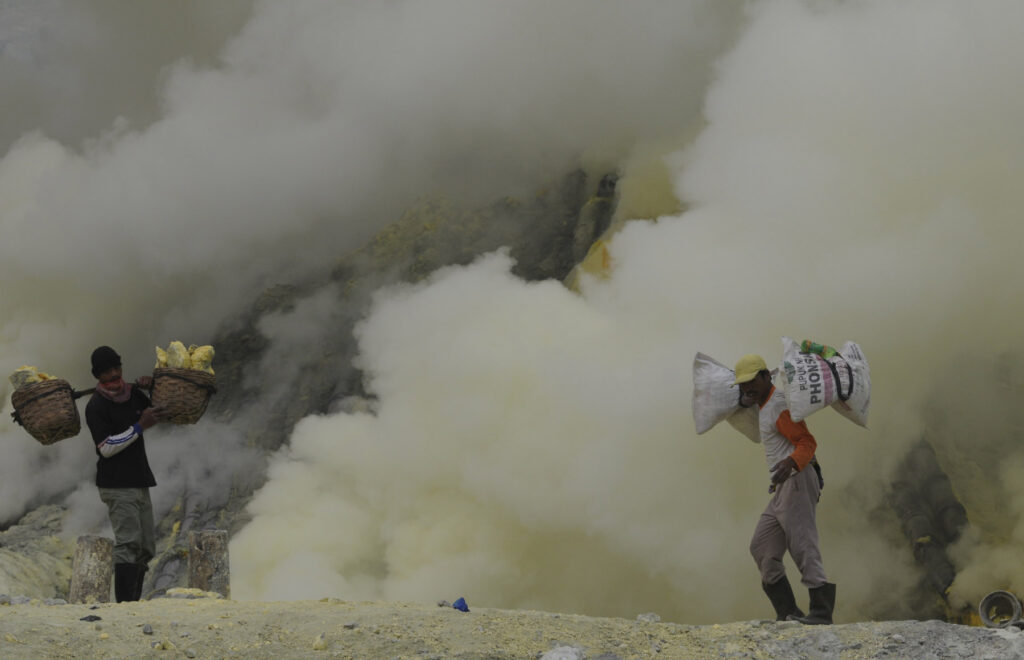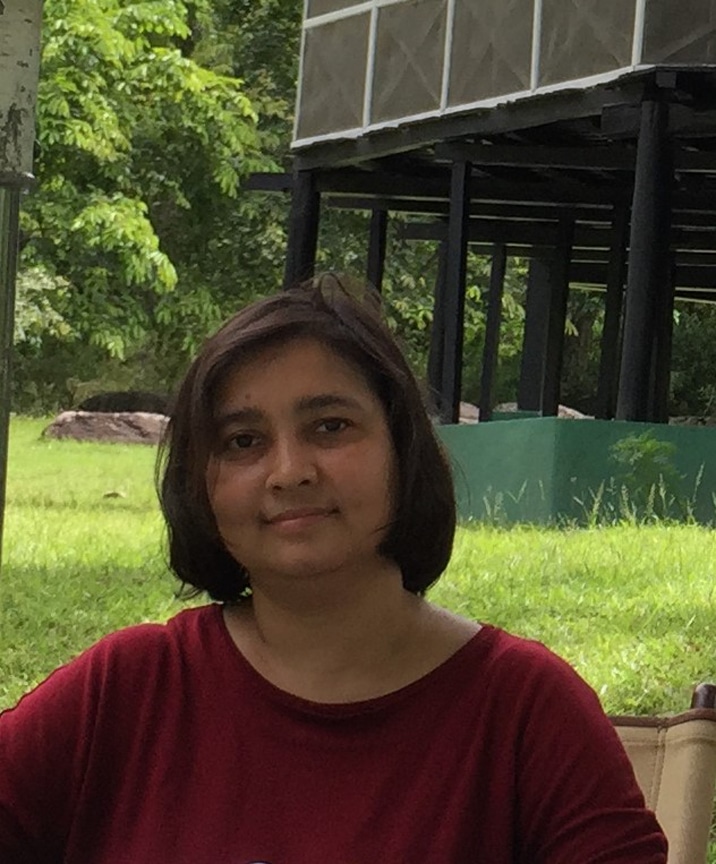Mount Ijen: A Tale Of Toxic Trail

1
Posted August 25, 2023
It has been raining incessantly for an hour or so. Rain in this remotest part of Indonesia is common, but it has dampened my spirit altogether. I have come here in East Java to experience a midnight hike to the volcanic crater of Kawah Ijen and watch the blue fire created by the spontaneous combustion of subterranean gases and toxic yellow smoke. I had been mesmerized by the images of blue flames spilling down the hillsides of Ijen and when I came to know that it is the largest blue flame area in the world, I decided that Ijen Volcano would be my next destination. I reached the resort in Licin village, my base for the next two days, late in the evening.
”Do not be so upset about rain,” Joe tells me. We are talking over some Javanese coffee at the restaurant of the resort where I am staying. Joe works as a tourist guide here and she has been appointed to take me to the crater. But this heavy downpour is spoiling it all. “You can still hike to the rim of the crater in the morning if the weather gets clear and view the acidic crater lake”.
“A lake cannot be the alternative of Blue Flames” I answer, unable to keep the irritation out of my voice. However, I agree to hike to the rim of the crater anyway to catch a glimpse of the world’s largest acidic crater lake.
The rain slackens and at 2:30 a.m. sharp, we start our drive towards Kawah Ijen. It is a bumpy jeep ride and within twenty minutes we are at the trailhead of the volcano. It is pitch dark.

Some shadowy figures pass by. One of them cries out “Api Biru?” “Api Biru means blue flame”, Joe explains. “They just want to know if you are here for blue fire and suggest not to climb as there is no blue fire today”.
“Oh! Who are they?” I ask, navigating the steep slippery stony path in darkness.
“They are sulfur miners,” Joe answers.
During the upward trudge towards the rim, we meet several miners going up with empty baskets and coming down with loaded ones. A pungent smell comes from the baskets. Through my dim headlamp light, I see the rocky yellow sulfur on the shoulders of the miners. Ijen volcano has a kilometre-wide turquoise-colored acidic crater lake and it is the only place on earth where sulfur is extracted manually.
I notice the change in vegetation. The landscape around me is now rocky and barren. The pungent smell gets stronger with a foul stench of rotten eggs. We reach the rim of the crater. It is wide open and flat. Some more miners pass by. Joe suggests that I cover my face with the mask she has given me as it would reduce the yolky smell. I walk forward to glance at the crater lake cocooned below in the womb of the volcano. The view of the lake takes my breath away. Greyish white fumes billow and drift up from below — the toxic fumes of sulfur. I stand there motionless, marveling at the bizarre beauty of the other-worldly landscape.

“He can take you down there to the crater,” Joe’s voice breaks the spell. A short-statured man, in his late fifties, smiles at me. “Amir can speak good English,” Joe adds, helpfully.
We start descending over a jagged and lunar trail towards the inner depths of Kawah Ijen. I have to calculate each and every step to save myself from sliding down on loose boulders. The cloud of smoke below engulfs the miners. After scampering down for about 40 minutes, we reach the crater floor. From here the emerald waters of Ijen lake look even more mesmerizing. Amir shows me the ceramic pipes through which the volcanic gases are channeled, resulting in the condensation of molten sulfur. The deep red-colored molten sulfur pours slowly from the ends of these pipes and pools on the ground turning bright yellow as it cools. The miners break the cooled material into large pieces and carry it in wicker baskets.
“We carry loads ranging from 75 to 90 kilograms up 980 feet to the crater rim with a gradient of 45 to 60 degrees, and then again three kilometres down the mountain for weighing,” Amir tells me. “Most miners make the journey twice a day,” he informs.
I notice that miners have covered their faces with cotton scarves. They do not even have proper protective gear for this toxic environment.

Suddenly a gush of wind blows in and I am completely engulfed in a volley of fumes. Amir hastily pulls me out. My eyes are stinging, there is an abrasive feeling on my windpipe and I feel out of breath. Amir advises me to come out of the mining zone as a longer stay might tell upon my health, he says. If the exposure in a short stay of an hour is so detrimental to one’s health, what happens to these miners I wonder, who are continuously exposed to these toxic fumes. “We develop severe respiratory problems, chest pain, our eyes get weak, some of us develop chronic knee problems,” Amir tells me.
“Is there no other alternative?” I am curious to know.
“We earn 12 US dollars per day here. A farmer in the paddy fields earns about 5USD. It’s money, you see,” Amir says. His wrinkled face clearly speaks of his years of toil in this hellish work zone.
As I walk on the rocky lakeshore, Amir narrates how he saved a tourist who slipped into the lake’s acid waters. “An accident means closure of access to this zone and our jobs gone,” Amir laughs.
I see some of his teeth are missing, dissolved due to prolonged exposure to the noxious fumes. “How long do you work here?” I ask him as we retrace the steep climb towards the rim of the crater. “We start at 3:00 in the morning and work more or less eight hours per day.”
We stop to make way for a miner going up with huge loads of sulfur. The man is sweating profusely. He stops and smiles at me. I notice a deep scar on his shoulder. His muscles are hyper-developed, face wrinkled and some teeth missing.

”Can I offer him some biscuits and water?” I ask Amir. He laughs. “He has stopped to smoke. It helps to ward off the smell of the sulfuric gases.”
We reach the rim. Even now at 8 a.m. the heat is unbearable and I realise why the miners prefer early morning or nocturnal trips to retrieve sulfur. I decide to descend slowly as I feel a bit dizzy. I notice lush green coffee plantations and rice field below freshly drenched in the last night’s rain.
“Do the miners have any age of retirement?”
Amir laughs aloud. “Those of us who work here barely live beyond forty-five years. These toxic gases burn our lungs. We retire forever.” He points to the blue sky. “I am forty now and I have to secure the future of my daughter.” I feel so awkward listening to a man who is implying that he might not live more than five years from now!
Amir, however, quickly changes the topic. He informs me that tourism is developing in this remote area. He tells me that he is working as a part-time tourist guide now. I really appreciate the idea of homestay options in the nearby villages that he talks about. Amir wishes to provide the best education to his daughter so that she can reach her goal as a doctor.
Rain sets in. I see Joe coming up, looking for me. Two other miners join Amir. The day’s work is over. I hear them laughing loudly. Now they engage themselves in tobacco-fueled conversations. I turn back. Miners are blurred now but I see clearly the dream-ignited blue flames burning in their eyes.

Where to Stay Near Mount Ijen, East Java?
Search, compare and book hotels & rentals at the best prices that are sourced from a variety of platforms including Booking.com, Hotels.com, Expedia, Vrbo and more. You can move the map to search for accommodations in other areas and also use the filter to find restaurants, purchase tickets for tours and attractions and locate interesting points of interest!
Join the community!

Join our community to receive special updates (we keep your private info locked.)




